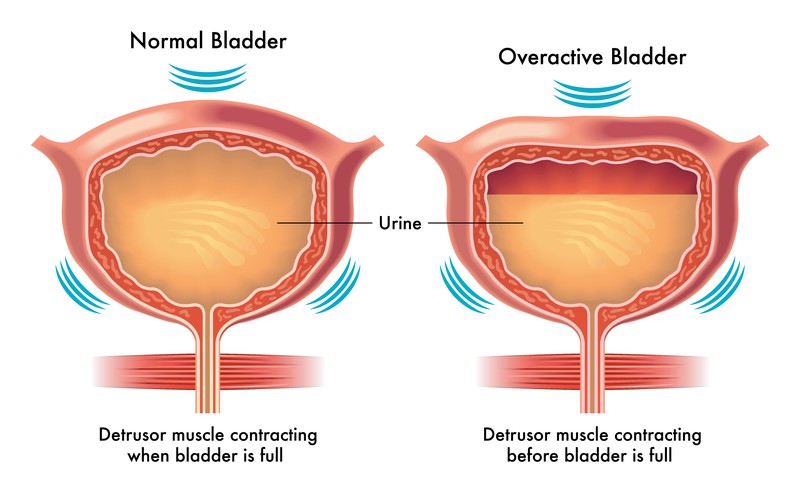Overactive bladder is a prevalent condition that can significantly impact an individual’s quality of life. However, with the right knowledge and appropriate therapies, managing, improving, and resolving OAB symptoms is possible.
What is Overactive Bladder (OAB)?
OAB is a urological condition characterized by a sudden, uncontrollable urge to urinate. Individuals with OAB often experience frequent urination during the day and night, known as urinary frequency, along with a strong and urgent need to urinate, called urinary urgency. In some cases, this urgent need to urinate can lead to involuntary leakage, known as urinary incontinence.
OAB is caused by involuntary contractions of the bladder muscle, leading to the sensation of urgency and frequent urination. Various factors can contribute to the development of OAB, such as age, hormonal changes, certain medical conditions, stress and anxiety, and lifestyle choices.
Treating OAB with Pelvic Health Physiotherapy:
While there are several treatment options available for OAB, including medications and behavioral modifications, pelvic health physiotherapy has emerged as the preferred first line treatment approach for individuals with OAB symptoms.
Pelvic health physiotherapy management of OAB aims to restore and improve the function of the bladder and reduce OAB symptoms. Typically this will involve bladder training techniques, education regarding lifestyle modifications or habits along with assessment and management of pelvic floor muscles, which play a vital role in maintaining bladder control.
A Range Physio Pelvic health management plan for OAB may include:
- Pelvic Floor Muscle Exercises: These exercises, including both strengthening and relaxation techniques, play a vital role in improving bladder control and reducing OAB symptoms. Strengthening exercises, commonly referred to as Kegel exercises, help strengthen and control the pelvic floor muscles. Of equal importance are pelvic floor muscle relaxation exercises, also known as downtraining exercises. These techniques aim to release tension in the pelvic floor muscles, allowing them to fully relax and function optimally.
- Bladder Training: A physiotherapist can guide individuals through bladder training techniques, such as scheduled voiding and strategies to suppress the urge to urinate , to help gradually increase bladder capacity and reduce urinary frequency and urgency.
- Biofeedback: Using specialized equipment, biofeedback can help individuals gain awareness and control over their pelvic floor muscles by providing real-time feedback on muscle contractions. At Range Physio, we offer real-time ultrasound assessment and Electromyography (EMG) assessment in our rooms.
- Lifestyle Modifications: A physiotherapist may provide guidance on lifestyle changes, such as fluid intake management, dietary modifications, and healthy bowel habits, which can positively impact OAB symptoms.
OAB can significantly impact an individual’s daily life, but it is important to know that effective treatment options, such as pelvic health physiotherapy, exist. Through personalized assessment and targeted interventions, pelvic health physiotherapy aims to alleviate or eliminate OAB symptoms and improve bladder control. Range Physiotherapists will promote a better understanding of OAB and enhance the quality of life for those affected by this condition.


